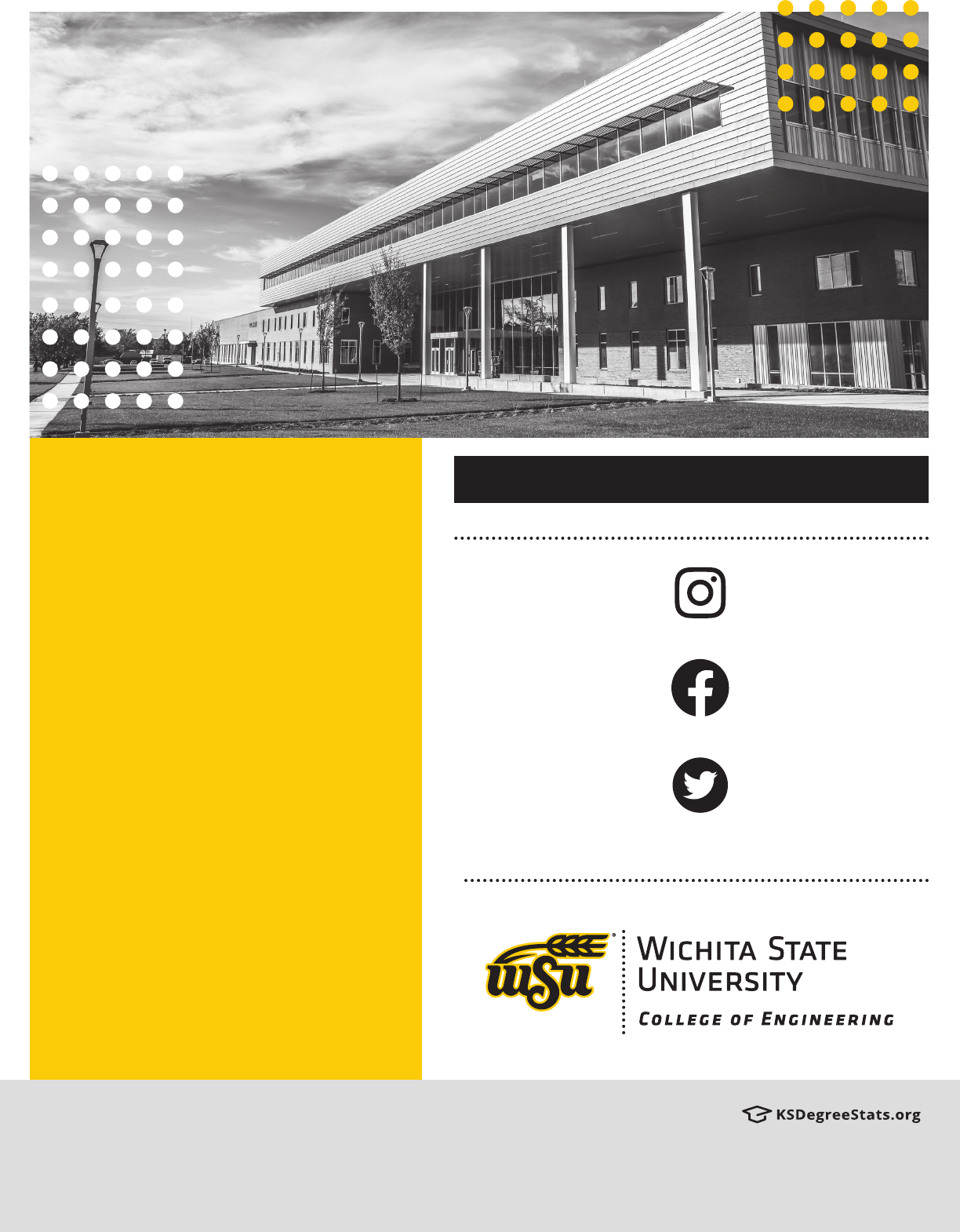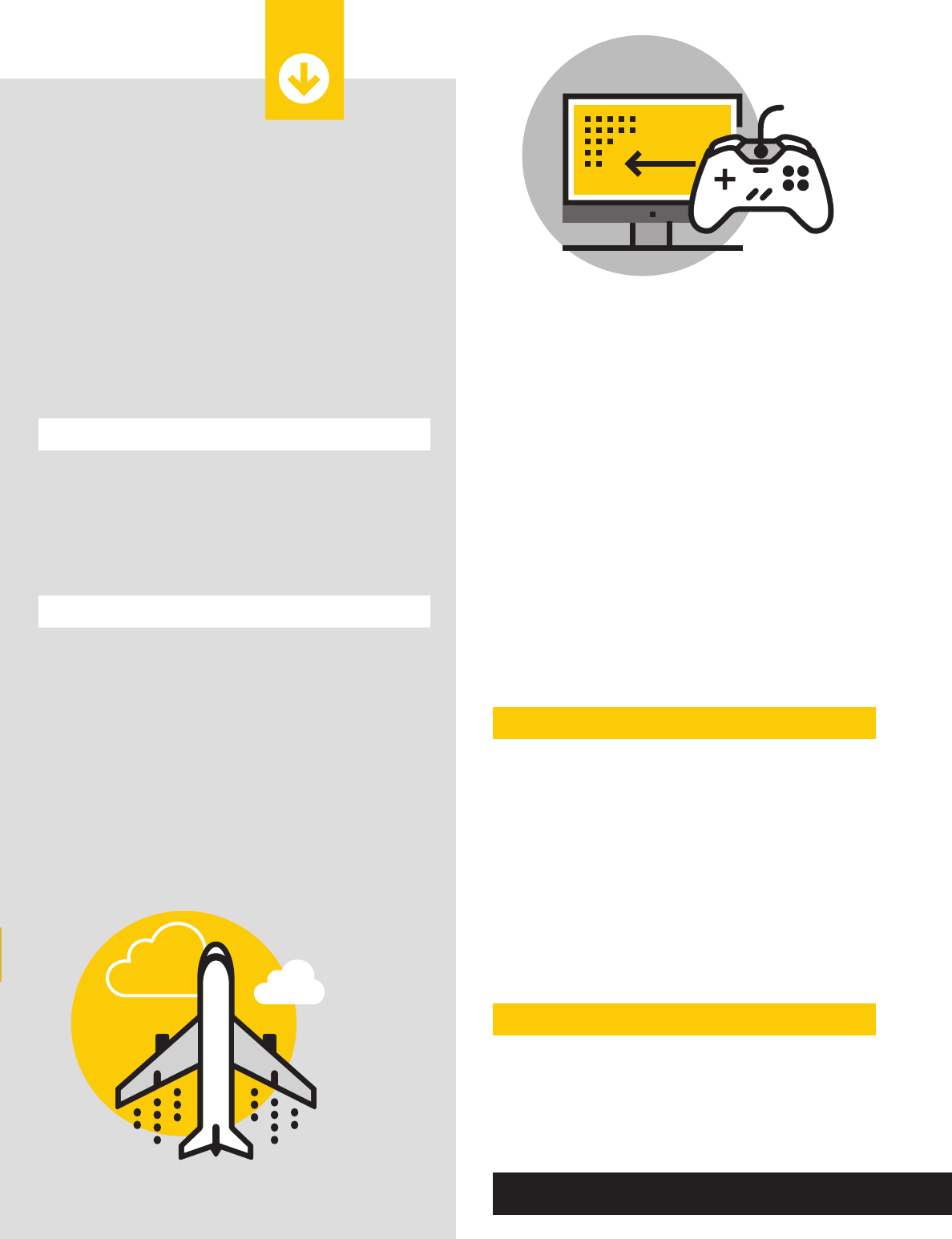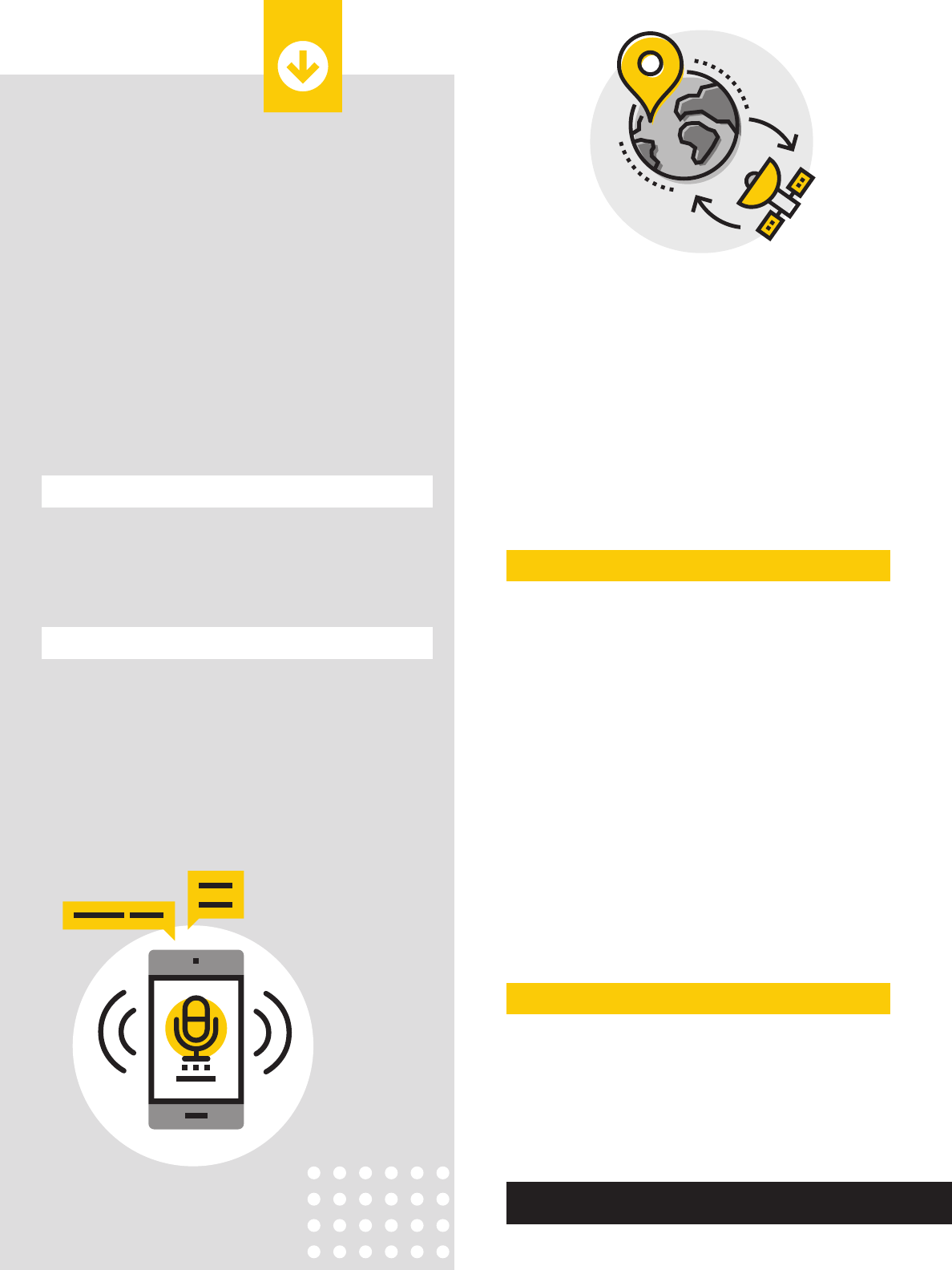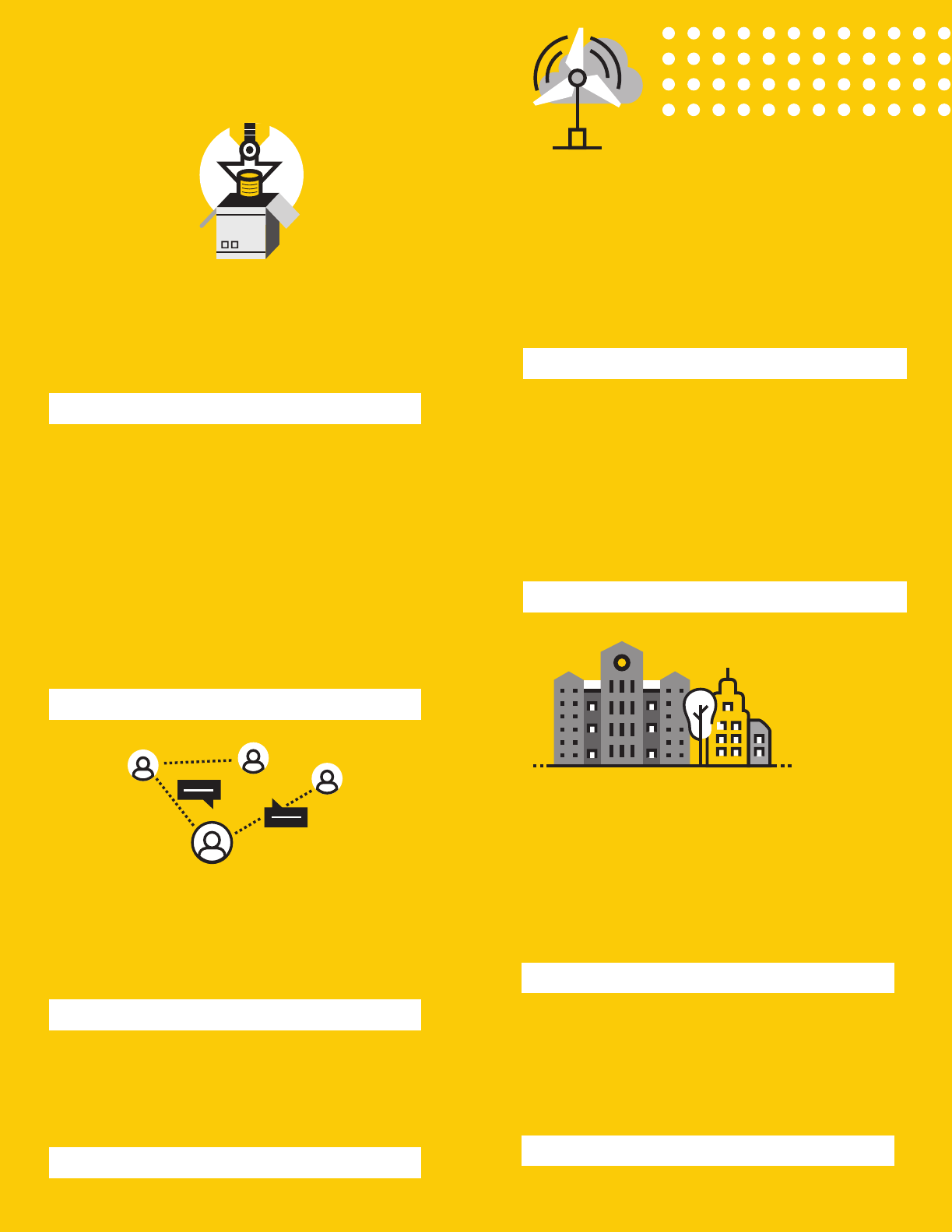
(,,)
Biomedical engineers design the medical technology
to maintain and improve our quality of life. They work
for pharmaceutical and medical device companies,
hospitals and rehabilitation centers, and medical
research institutes.
:
Biomedical Project Engineer
Research Engineer
Process Engineer
Quality Engineer
Biomedical Engineer
Clinical Engineer
Product Support Engineer
Biomedical Technician
: ,
/ :
Apply knowledge of engineering, biology and
biomechanical principles to the design, development
and evaluation of biological and health systems
and products, such as artificial organs, prostheses,
instrumentation, medical information systems and
health management and care delivery systems.
Graduates also pursue careers in medicine, physical
therapy, prosthetics and orthotics, dentistry and
pharmacy.
(,,)
Computer engineers work on the interfaces
between computer hardware (physical devices)
and software (the programs running on devices).
They develop new computer architectures (CPUs
and microcontrollers), computing paradigms (GPU
programming), computer-based control systems
(smart devices, Internet of Things), and smart
appliances (embedded vehicular computers).
:
Computer Architect
Embedded Systems Engineer
Network Engineer
Project Engineer
Hardware Engineer
Systems Engineer
Systems Architect
Data Analyst
: ,
/ :
Research, design, develop, or test computer or
computer-related equipment for commercial,
industrial, military, or scientific use. May supervise
the manufacturing and installation of computer or
computer-related equipment and components.

A E
wichita.edu/aerospace
A C, C S
wichita.edu/soc
B E
wichita.edu/bme
E E,
C E
wichita.edu/ece
E T,
F M
wichita.edu/engtech
I E, P D
M E
wichita.edu/isme
M E
wichita.edu/mechanical
visit wichita.edu/engineering
@wsu_engineering
fb.com/wsuengineering
@wsuengineering
*Career and Employment Data from www.onetonline.org
Wichita State University (WSU) does not discriminate in its employment practices, or in its educational programs or activities on the basis of age (40 years or older), ancestry, color, disability, ethnicity, gender, gender expression, gender identity, genetic information, marital status, national origin, political
affiliation, pregnancy, race, religion, sex, sexual orientation, or status as a veteran. WSU also prohibits retaliation against any person making a complaint of discrimination or against any person involved or participating in the investigation of any such allegation. Sexual misconduct, relationship violence,
and stalking are forms of sex discrimination and are prohibited under Title IX of the Education Amendments Act of 1972, other federal law, and WSU policy. The following persons have been designated to handle inquiries regarding WSU’s non-discrimination policies: the Institutional Equity and Compliance
Director (Telephone: (316) 978-3205), Title IX Coordinator (Telephone: (316) 978-5177), or Equal Opportunity Coordinator (Telephone: (316) 978-3186), each located at Wichita State University, 1845 Fairmount, Wichita, KS 67260, Human Resources Building.

wichita state university
wichita.edu/engineering

(,,)
Our aerospace engineering students learn aerodynamics,
structures, propulsion and control systems. They
work everywhere from traditional aircraft/spacecraft
companies to NASA. They also work in spin-o industries
that similarly demand lightweight and optimized
high-performance products, including the automotive
(racing), energy (wind), and medical fields.
:
Aeronautical Engineer
Systems Engineer
Structural Analysis Engineer
Flight Test Engineer
Flight Controls Engineer
: ,
/ :
Perform engineering duties in designing, constructing
and testing aircraft, missiles and spacecraft. May
conduct basic and applied research to evaluate
adaptability of materials and equipment to aircraft
design and manufacture.
()
Students in the Applied Computing program learn
how to apply computer technology skills with a broad
understanding of how these skills operate in the real
world. With a focus on experiential learning, students
prepare for careers in computer analytics, cybersecurity,
data analysis, game development and social media
applicaitons.
Students can earn certificates in: Cybersecurity
Essentials, Data and Web Security, Cyber-Physical
Systems, Human Factors in Security Technology, and
Applied Data Analysis
:
Computer Support Specialist
Cybersecurity Analyst/Engineer/Support
Network/Systems Support Specialist
Technology Consultant
Network Engineer
Webmaster/Administrator
Data Warehousing Specialist
Network/Systems Administrator
Web Developer
Cyber/Information Security Engineer
: ,
B Bachelor | M Master | D Doctorate

(,,)
Electrical engineers are the driving force of technology
innovation and development for the advancement of
humanity: communication (LTE, 5G, Wi-Fi, Bluetooth,
radar), electronic devices (smart phones, computers,
car infotainment systems, medical devices), control
systems (UAVs and self-driving cars, automation)
or power systems (renewable power, power grid and
delivery, electric motors for electric vehicles).
:
Circuits Engineer
Electrical Design Engineer
Telecommunications Engineer
Controls & Automation Engineer
Power Systems Engineer
Electrical Reliability Engineer
Electrical Test Engineer
Electrical Project Engineer
Instrumentation Engineer
Avionics Electrical Engineer
Electronics Engineer
Analog / RF Engineer
: : ,
/ :
Research, design, develop, test, or supervise the
manufacturing and installation of electrical equipment,
components, or systems for commercial, industrial,
military, or scientific use.
(,,)
Computer science is the perfect mixture of science
and engineering; it is the study of computer-based
algorithmic processes that describe, transform and
interpret information. Recent advances in artificial
intelligence, machine and deep learning (internet search,
voice control personal assistants, data driven discovery),
highly reliable computer networks (internet), distributed
computing (Cloud), and quantum computing are all
results of computer science.
:
Computer Scientist
Computer Systems Architect
Software Engineer
Data Scientist
: ,
/ :
May design software for computer systems or
embedded devices. Research, design, implement, and
test algorithms for computing based problem solving,
analysis, and modeling.
B Bachelor | M Master | D Doctorate

()
Our broad program allows students to specialize in several
career areas. Examples of some of these include the following:
Advanced Automation: Design, plan and perform engineering
duties in industrial automation and manufacturing, which
includes robotics, mechatronics, automated equipment, factory
4.0 and instrumentation design.
:
Robotics Engineer/Technician
Mechatronics Engineer
Control systems engineer
Manufacturing Engineer
Electromechanical Engineer
Automation Engineer
Instrumentation Engineer
Systems Integrator
: ,
Engineering Management: Plan, initiate and manage
engineering and technology projects. Lead and guide the work of
technical sta. Serve as liaison between business and technical
aspects of projects.
:
Manufacturing Process Engineer
Project Manager
Transition Program Manager
Senior Engineering Team Lead
: ,
Sustainability Technology: Research, design, plan and
perform engineering duties in environmental manage-
ment, pollution control and assessment, energy and
water management and sustainability. Work may include
water/waste treatment, pollution prevention technology,
or energy and water sustainability management.
:
Environmental Engineer
Environmental Engineering Technician
Environmental Scientist
Sustainability Engineer
Renewable Energy Engineer
Energy Eingineer
: ,
()
Facilities Management integrates people, places, process
and technology within the built environment with the
purpose of improving the quality of life of people and the
productivity of the core business.
:
Facilities Manager
Director of Facilities
Facilities Coordinator
Facilities Engineer
Maintenance Manager
: ,

(,,)
Industrial Engineers work to design large and complex
systems of people, money, information energy, equipment
and materials to operate more eectively through data
analytics and risk estimation. The industrial engineering
approach integrates subjects in mathematics, data
analytics, physical and social sciences, economics and the
engineering design to answer questions like “how does
FedEx get packages from 10 towns in Kansas to Beijing,
China in just two days?” Or, “how to design a factory, its
production systems, supply chain, and quality control
systems while keeping the product cost low?”
:
Data analyst
Operations Engineer
Plant Engineer
Supply Chain Engineer
Quality Control Engineer
Ergonomics Engineer
: ,
/ :
Design, develop, test and evaluate integrated systems
for managing industrial and service processes, including
human factors, quality control, inventory control, logistics
& supply chain, material flow, cost analysis and production
coordination through data collection and analytics.
(,,)
Students in Mechanical Engineering study mechanics,
materials, thermo-fluids and controls with direct
application to autonomous vehicle design, alternative
energy, water/energy conservation, nano-bio-electronic
materials, artificial intelligence and robotics, and other
interdisciplinary areas. Upon graduation, our students
enter the job market in aircraft, automobile design,
energy, petroleum, and process industries to build nearly
every machine employed by society.
:
Design Engineer
Process Engineer
Application Engineer
Test Engineer
Development Engineer
Production Engineer
: ,
Potential job duties/ descriptions:
Perform engineering duties in planning and designing
tools, engines, machines and other mechanically
functioning equipment. Oversee installation, operation,
maintenance and repair of equipment such as centralized
heat, gas, water and steam systems.

()
Product design and manufacturing engineering is an
interdisciplinary curriculum that teaches students to design
products and the manufacturing processes that transform
raw materials, parts and subassemblies into intermediate
and final products through traditional, and non-traditional
processes, and with the use of smart automation systems
such as IOT based Robotics and Controls.
:
Facility Engineer
Automation Engineer
Robotics and IOT based Systems Engineer
Plant Engineer
Quality Control Engineer
Director of Manufacturing
: ,
/ :
Design, integrate or improve manufacturing systems or
related processes. May work with designers to increase
productivity, to refine product designs and decrease costs.
Also design automation systems for robotics and controls
of the factory.
S
.
To discover more about how
WSU’s College of Engineering
can help you build a bright
future, schedule a campus visit:
./
or call () -
